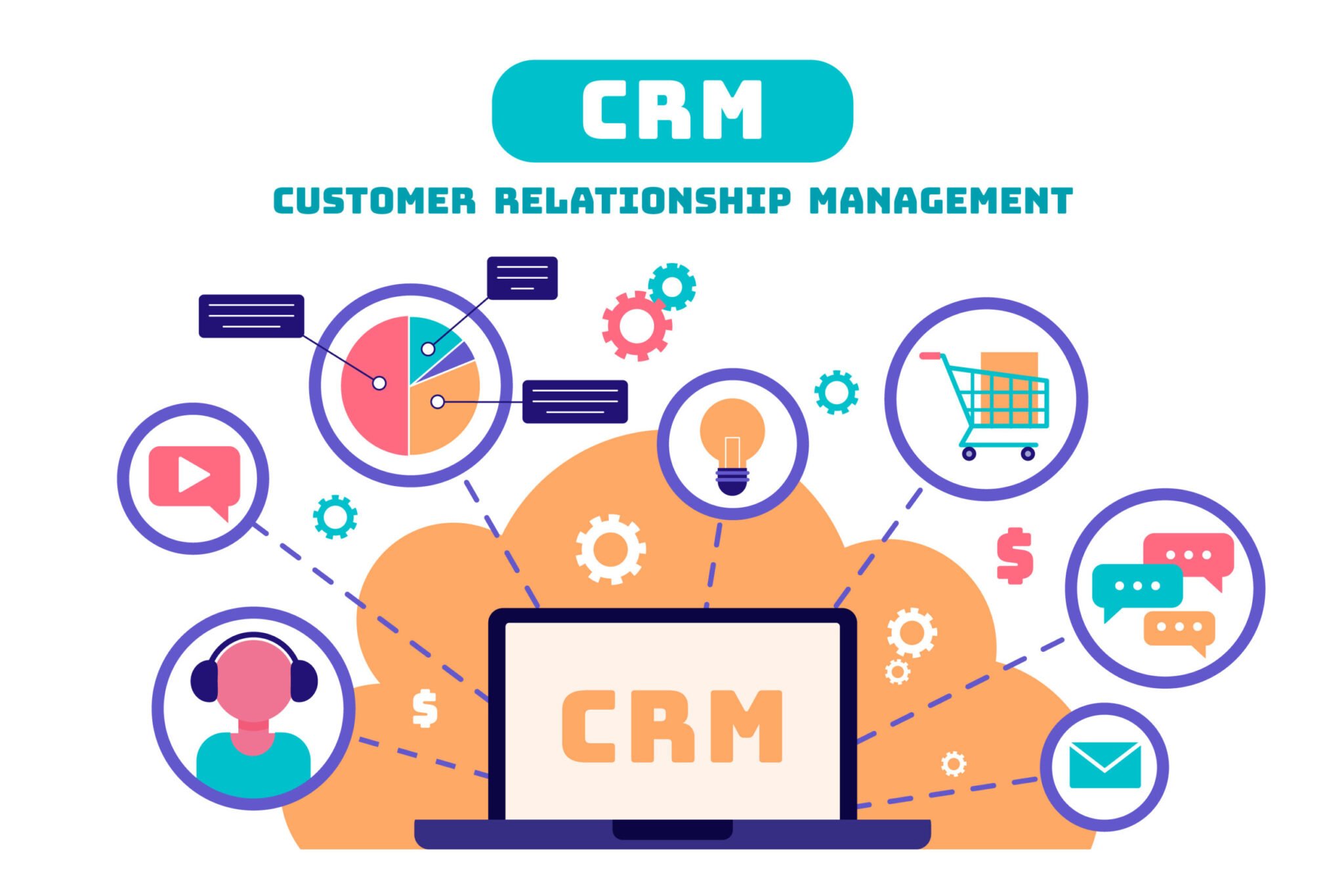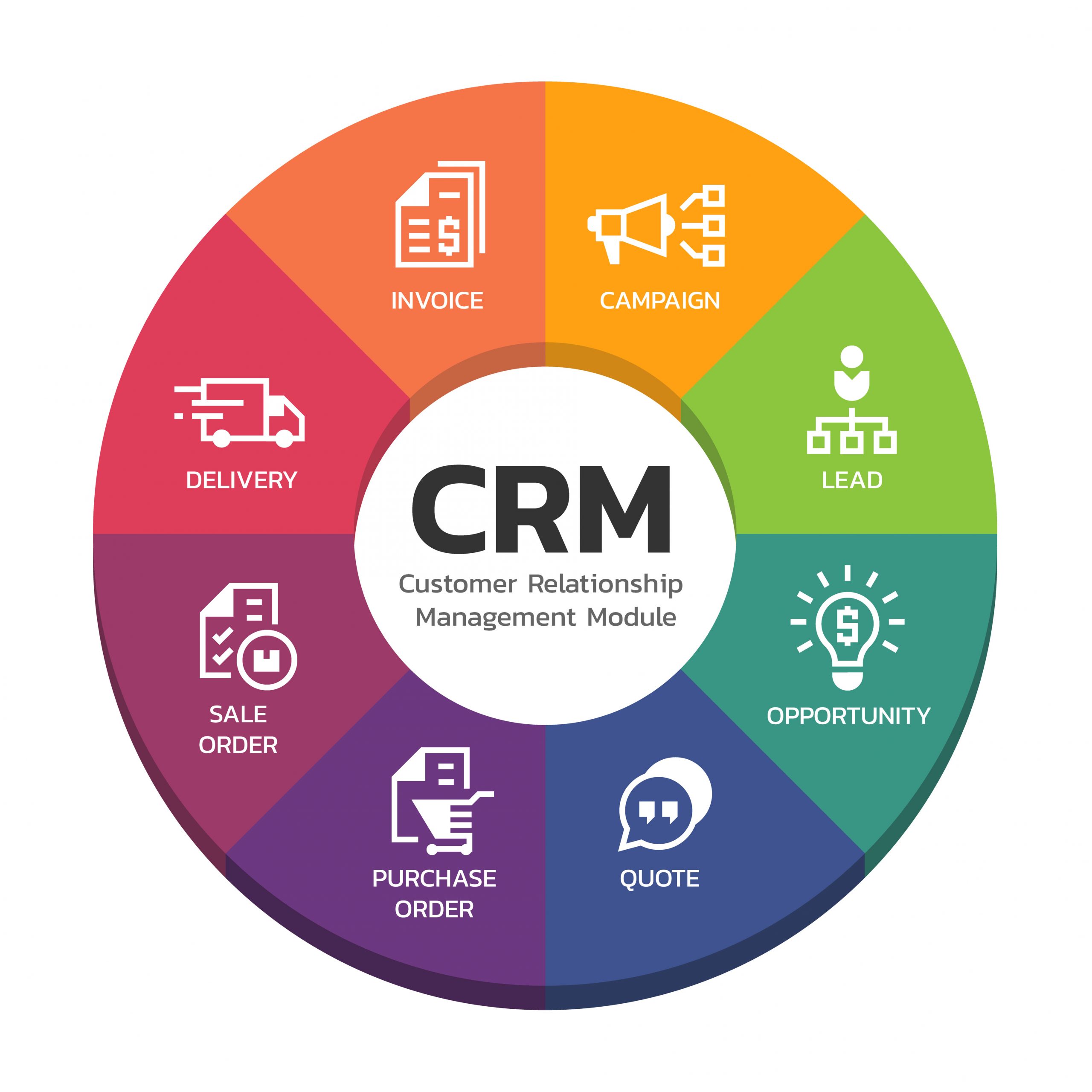Crm systeem – Step into the realm of CRM systems, where customer relationships flourish and business efficiency skyrockets. Dive into this comprehensive guide as we explore the types, benefits, challenges, and trends that shape the CRM landscape, empowering businesses to unlock their full potential.
From operational to analytical and collaborative, we’ll delve into the diverse capabilities of CRM systems, highlighting their key features and functionalities. Success stories and real-world examples will showcase the transformative impact of CRM implementation, quantifying improvements in customer satisfaction, sales growth, and cost reduction.
CRM System Overview
A Customer Relationship Management (CRM) system is a software solution that helps businesses manage and track their interactions with customers and potential customers. It provides a centralized platform for storing customer data, managing sales pipelines, tracking marketing campaigns, and providing customer support.
CRM systems offer a number of benefits, including improved customer service, increased sales productivity, and better marketing ROI. However, implementing a CRM system can also be challenging, as it requires a significant investment of time and resources.
Benefits of Implementing a CRM System
- Improved customer service: CRM systems provide a centralized repository for all customer data, making it easy for customer service representatives to access the information they need to resolve customer issues quickly and efficiently.
- Increased sales productivity: CRM systems help sales teams track their progress and identify opportunities, which can lead to increased sales productivity.
- Better marketing ROI: CRM systems can help marketers track the effectiveness of their campaigns and identify which campaigns are generating the most leads and sales.
Challenges of Implementing a CRM System
- Cost: CRM systems can be expensive to implement and maintain.
- Time: Implementing a CRM system can be time-consuming, as it requires businesses to gather data, configure the system, and train employees.
- Complexity: CRM systems can be complex, and businesses may need to invest in training and support to ensure that their employees are able to use the system effectively.
Types of CRM Systems: Crm Systeem

Customer relationship management (CRM) systems are software applications that help businesses manage and track their interactions with customers. There are different types of CRM systems, each with its own unique features and functionalities.
The three main types of CRM systems are:
Operational CRM
- Automates and streamlines customer-facing processes, such as sales, marketing, and customer service.
- Provides a central repository for customer data, which can be accessed by all employees who need it.
- Helps businesses track customer interactions and identify opportunities for improvement.
Analytical CRM
- Analyzes customer data to identify trends and patterns.
- Helps businesses understand their customers’ needs and preferences.
- Provides insights that can be used to improve marketing campaigns, product development, and customer service.
Collaborative CRM, Crm systeem
- Enables different departments within a business to collaborate on customer-related activities.
- Provides a platform for sharing customer information and insights.
- Helps businesses improve customer satisfaction and loyalty.
CRM System Implementation
CRM system implementation involves a series of crucial steps to ensure successful adoption and utilization. Data migration, customization, and user training play vital roles in the overall effectiveness of the CRM system.
Data Migration
Data migration is the process of transferring data from legacy systems or spreadsheets into the new CRM system. It’s essential to carefully plan and execute this process to ensure data integrity and minimize disruptions during the transition.
- Identify all relevant data sources and determine the best approach for extraction and transformation.
- Cleanse and validate data to remove duplicate, incomplete, or inaccurate information.
- Map data fields from the legacy system to the new CRM system to ensure proper data mapping and integrity.
- Establish a data migration plan that includes timelines, resources, and testing procedures.
Customization
Customization is essential to tailor the CRM system to the specific needs of your organization. It involves configuring the system to match your unique business processes, workflows, and user preferences.
- Define custom fields and objects to capture and manage data that is specific to your industry or business.
- Create custom dashboards and reports to provide tailored insights and metrics for different roles and teams.
- Configure workflows and automations to streamline tasks and improve efficiency.
- Integrate with other business systems, such as email marketing or accounting software, to create a comprehensive and connected business ecosystem.
User Training
User training is crucial for ensuring that employees are proficient in using the CRM system and maximizing its benefits. Effective training programs empower users to leverage the system’s capabilities and drive adoption.
- Develop comprehensive training materials that cover all aspects of the CRM system.
- Provide hands-on training sessions to allow users to practice and apply their knowledge.
- Create user guides and resources for ongoing reference and support.
- Establish a feedback mechanism to gather user input and identify areas for improvement in the training program.
CRM System Benefits
CRM systems offer numerous advantages to businesses, leading to improved customer satisfaction, increased sales, and reduced costs.Numerous case studies and real-world examples showcase the positive impact of CRM implementation. For instance, a leading e-commerce company implemented a CRM system that enabled them to track customer interactions, personalize marketing campaigns, and streamline sales processes.
As a result, they experienced a significant increase in customer retention, with repeat purchases rising by 25%.
Quantified Benefits
* Improved Customer Satisfaction:CRM systems provide a comprehensive view of customer interactions, allowing businesses to better understand customer needs and preferences. By responding promptly to inquiries, resolving issues effectively, and providing personalized experiences, businesses can enhance customer satisfaction.
Increased Sales
CRM systems help businesses identify and target potential customers, track sales pipelines, and manage customer relationships. By automating sales processes and providing insights into customer behavior, businesses can increase conversion rates and drive revenue growth.
Reduced Costs
CRM systems streamline operations by automating tasks, reducing manual labor, and eliminating the need for multiple software applications. This efficiency leads to cost savings in areas such as customer service, sales, and marketing.
CRM System Challenges

CRM system implementation presents several challenges that organizations must anticipate and address effectively. These challenges can arise from various sources, including resistance to change, data quality issues, and integration complexities.
Overcoming these challenges requires a comprehensive strategy that involves proactive planning, effective communication, and robust data management practices.
Resistance to Change
One of the most common challenges in CRM system implementation is resistance to change. Employees may be hesitant to adopt new processes and technologies, fearing that it will disrupt their established workflows or diminish their job security. To address this, organizations should:
- Communicate the benefits of the CRM system to employees, emphasizing how it can improve their productivity and efficiency.
- Involve employees in the planning and implementation process to gain their buy-in and feedback.
- Provide training and support to help employees adapt to the new system.
Data Quality Issues
Another challenge is ensuring data quality. CRM systems rely on accurate and up-to-date data to provide valuable insights and drive effective decision-making. Organizations should:
- Establish clear data governance policies and procedures to ensure data accuracy and consistency.
- Implement data cleansing and validation processes to identify and correct errors in the data.
- Integrate the CRM system with other data sources to ensure data synchronization and minimize data duplication.
Integration Complexities
Integrating the CRM system with other enterprise systems can be a complex and time-consuming process. Organizations should:
- Plan and design the integration carefully, considering the technical capabilities and data requirements of each system.
- Use integration tools and middleware to facilitate the data exchange between systems.
- Test the integration thoroughly to ensure seamless data flow and avoid data inconsistencies.
CRM System Trends

The CRM industry is constantly evolving, with new trends emerging all the time. These trends are driven by the changing needs of businesses and the rapid pace of technological innovation. Some of the most important CRM trends to watch for in the coming years include artificial intelligence (AI), cloud computing, and mobile CRM.
AI is already being used in a variety of ways to improve CRM systems. For example, AI can be used to automate tasks, such as lead scoring and customer segmentation. AI can also be used to provide insights into customer data, such as identifying trends and patterns.
As AI continues to develop, it is likely to play an even greater role in CRM systems.
Cloud computing is another major trend that is impacting the CRM industry. Cloud-based CRM systems are hosted on the internet, which means that businesses can access them from anywhere with an internet connection. Cloud-based CRM systems are typically more affordable and easier to use than on-premises CRM systems.
They are also more scalable, which means that they can grow with your business.
Mobile CRM is another important trend to watch for. Mobile CRM systems are designed to be used on smartphones and tablets. This makes it easy for businesses to stay connected with their customers while they are on the go. Mobile CRM systems can be used to track customer interactions, manage sales pipelines, and provide customer support.
Impact of CRM Trends on Businesses
The emerging trends in CRM technology are having a significant impact on businesses. These trends are making it easier for businesses to manage their customer relationships, improve their sales performance, and provide better customer service. As a result, businesses are increasingly investing in CRM systems.
AI is helping businesses to automate tasks, gain insights into customer data, and improve customer service. Cloud computing is making CRM systems more affordable, easier to use, and more scalable. Mobile CRM is making it easier for businesses to stay connected with their customers while they are on the go.
These trends are helping businesses to improve their customer relationships, increase their sales, and reduce their costs. As a result, CRM systems are becoming increasingly essential for businesses of all sizes.
Epilogue
As CRM technology continues to evolve, emerging trends like artificial intelligence, cloud computing, and mobile CRM hold immense promise. Businesses that embrace these advancements will gain a competitive edge, fostering stronger customer connections, streamlining operations, and driving sustainable growth.
Common Queries
What is the primary goal of a CRM system?
To centralize and manage customer data, streamline interactions, and enhance the overall customer experience.
How can CRM systems benefit small businesses?
By providing affordable and scalable solutions to manage customer relationships, track sales, and improve marketing efforts.
What are the common challenges faced during CRM implementation?
Data migration, resistance to change, and ensuring data quality are among the most prevalent challenges.
How can businesses overcome resistance to CRM adoption?
Effective communication, user training, and demonstrating the tangible benefits of CRM can help mitigate resistance.
